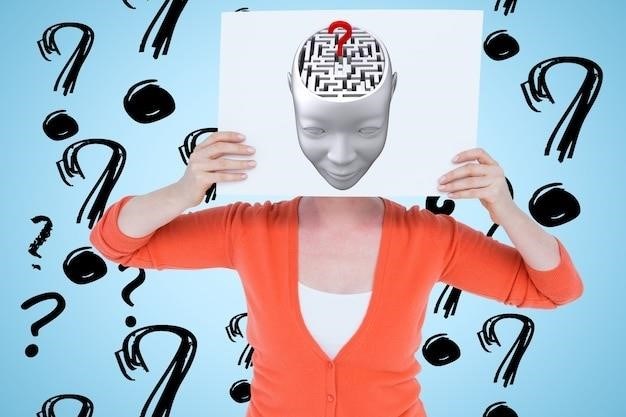
Understanding Reality Testing
Reality testing is the ability to differentiate between internal experiences and external reality. Impaired reality testing, a hallmark of several mental disorders, can lead to delusions and hallucinations. Assessing this ability is crucial for diagnosis and treatment planning.
Defining Reality Testing in Psychology
In psychology, reality testing refers to the individual’s capacity to accurately judge and interpret external stimuli and events, distinguishing between internal thoughts, feelings, and perceptions and the objective reality of the external world. It’s a crucial cognitive function involving the integration of sensory input, memory, and reasoning to form a coherent understanding of one’s environment. A strong reality test allows individuals to make sound judgments, adapt to their surroundings, and engage in appropriate behavior. Conversely, impaired reality testing can manifest as difficulty discerning reality from fantasy, leading to misinterpretations of events, and potentially resulting in delusional beliefs or hallucinations. This capacity is essential for adaptive functioning and is often assessed in clinical settings to identify potential cognitive deficits or mental health conditions.
Reality Testing and Mental Disorders
Impaired reality testing is a significant feature of various mental disorders, notably psychotic disorders like schizophrenia and delusional disorders. Individuals experiencing these conditions may struggle to distinguish between their internal experiences (thoughts, feelings, sensations) and external reality. This deficit can manifest as a range of symptoms, including hallucinations (perceiving things that aren’t there), delusions (fixed, false beliefs), disorganized thinking, and difficulties with social interaction. The severity of reality testing impairment can vary widely, influencing the individual’s ability to function in daily life. Accurate assessment of reality testing is crucial for diagnosis and treatment planning, informing therapeutic interventions aimed at improving cognitive functioning and reducing distress associated with distorted perceptions of reality. The extent of impairment can significantly impact prognosis and treatment response.
Delusions and Impaired Reality Testing
Delusions, fixed false beliefs, are a core symptom of impaired reality testing. These beliefs are resistant to reason or evidence, significantly impacting daily life and relationships. Understanding the nature and content of delusions is critical for effective intervention.
Types of Delusions
Delusions manifest in various forms, each impacting an individual’s perception of reality differently. Grandiose delusions involve inflated self-importance, beliefs of possessing exceptional abilities or power, or a connection to significant figures. Persecutory delusions center on the belief that one is being harmed, conspired against, or threatened. Erotomanic delusions involve the false belief that another person is in love with them. Jealous delusions center on unfounded suspicions of infidelity. Somatic delusions focus on bodily functions or sensations, often involving an imagined physical defect or illness. Nihilistic delusions involve beliefs of nonexistence, whether of oneself, the world, or aspects of reality. Referential delusions involve the belief that unrelated events or comments are personally directed toward them. These diverse types highlight the complexity of delusional thinking and the need for nuanced assessment strategies.
The Role of Reality Testing in Delusional Thinking
Reality testing plays a pivotal role in understanding and addressing delusional thinking. Individuals experiencing delusions demonstrate a significant impairment in their ability to distinguish between subjective experiences and objective reality. This impairment prevents them from critically evaluating the validity of their beliefs, leading to the persistent acceptance of even illogical or contradictory ideas. The lack of insight into the delusional nature of their thoughts further reinforces these beliefs. Effective therapeutic interventions, therefore, often target improving reality testing skills. This involves teaching individuals to identify and challenge their distorted thinking patterns, weigh evidence, and consider alternative explanations for their experiences. By strengthening reality testing abilities, individuals can begin to differentiate between their internal perceptions and external realities, ultimately reducing the pervasiveness and impact of their delusions.

Assessing Reality Testing
Clinicians assess reality testing through observation, interviews, and standardized questionnaires. Specific questions probe the individual’s ability to differentiate between internal experiences and external reality, identifying potential distortions in perception.
Clinical Assessment of Reality Testing
A comprehensive clinical assessment of reality testing involves a multifaceted approach incorporating various methods to gain a thorough understanding of an individual’s ability to distinguish between internal experiences and external reality. This assessment is crucial in diagnosing and managing mental health conditions characterized by impaired reality testing, such as schizophrenia and other psychotic disorders. The process begins with a detailed clinical interview, where the clinician directly interacts with the patient, exploring their thoughts, perceptions, and beliefs. During this interview, the clinician carefully observes the patient’s behavior, noting any inconsistencies or unusual patterns in their responses. The interview also provides an opportunity to gather information about the patient’s history, including past experiences, family history of mental illness, and any significant life events that may have contributed to their current state. In addition to the clinical interview, standardized psychological tests and questionnaires are often employed to obtain objective measures of reality testing. These tools are designed to assess various cognitive functions, including perception, judgment, and reasoning, providing a more quantitative assessment of the individual’s ability to discern reality. The integration of qualitative data from the clinical interview with quantitative data from psychological tests enables a more comprehensive and nuanced evaluation of reality testing capabilities, informing the development of an individualized treatment plan tailored to the patient’s specific needs.
Reality Testing Questions for Delusions
Clinicians utilize specific questioning techniques to assess reality testing in individuals experiencing delusions. These questions aim to gently challenge the delusional beliefs without causing distress or defensiveness. Open-ended inquiries encourage detailed descriptions of the delusion’s content, onset, and associated feelings. For example, “Can you tell me more about what happened?” or “How did you come to believe this?” The clinician then explores the evidence supporting the belief, contrasting it with counter-evidence. Questions like, “What makes you think this is true?” followed by, “Are there any other explanations that might be possible?” This helps determine the rigidity of the belief and the individual’s ability to consider alternative perspectives. The assessment also considers the individual’s insight into their condition. Questions such as, “Do you think it’s possible that your belief might not be entirely accurate?” or “Have others expressed concerns about your belief?” gauge their awareness of the discrepancy between their belief and reality. Finally, the clinician evaluates the impact of the delusion on the individual’s daily functioning. Questions focusing on daily life, relationships and decision-making help determine the severity of the delusion’s influence and its overall impact on their well-being. This comprehensive approach allows for a thorough evaluation of reality testing in the context of delusional thinking.
Therapeutic Interventions
Effective treatments for impaired reality testing and associated delusions include Cognitive Behavioral Therapy (CBT) and other therapeutic approaches tailored to individual needs and symptom severity.
Cognitive Behavioral Therapy (CBT) for Delusions
Cognitive Behavioral Therapy (CBT) is a prominent therapeutic approach for addressing delusions stemming from impaired reality testing. CBT for psychosis focuses on collaboratively identifying and challenging the maladaptive thought patterns and beliefs that contribute to delusional thinking. This is achieved through a structured process that involves psychoeducation about the nature of delusions and their impact, cognitive restructuring to challenge the validity of delusional beliefs, and behavioral experiments to test the reality of those beliefs. The therapist guides the patient in developing alternative explanations for their experiences and in establishing coping mechanisms to manage distressing symptoms. A crucial element is collaborative formulation; this means the patient and therapist work together to understand the patient’s unique experience and develop a personalized treatment plan. The therapist acts as a guide, assisting the patient in exploring their thoughts and behaviors, promoting self-awareness, and building skills for managing delusions and improving their overall functioning. The effectiveness of CBT is supported by research showing significant reductions in delusional beliefs and improved overall functioning in individuals with psychotic disorders. Regular sessions and consistent engagement are key factors in maximizing the benefits of CBT. Importantly, CBT is often integrated with medication management, improving treatment outcomes.
Other Therapeutic Approaches
Beyond Cognitive Behavioral Therapy (CBT), several other therapeutic approaches can be valuable in addressing delusions and improving reality testing. Family-based therapy, particularly multi-family groups, offers support and education to families impacted by a member’s psychotic illness. This approach helps families understand the illness, improve communication, and develop coping strategies. Supportive therapy provides a safe and non-judgmental space for individuals to discuss their experiences, reducing feelings of isolation and improving overall well-being. Social skills training equips individuals with practical skills to navigate social interactions, which can be challenging for those experiencing delusions. Medication is often an integral part of treatment, particularly antipsychotic medications, which can help to reduce the intensity of psychotic symptoms. Occupational therapy helps individuals develop strategies for daily living, fostering independence and reducing reliance on others. Art therapy and other creative therapies provide alternative avenues for self-expression and emotional regulation. The selection of therapeutic approaches is highly individualized, dependent on the specific needs and preferences of the individual, the severity and type of delusions, and the overall clinical presentation. A comprehensive and integrated treatment plan, potentially involving a multidisciplinary team, usually yields the best outcomes.